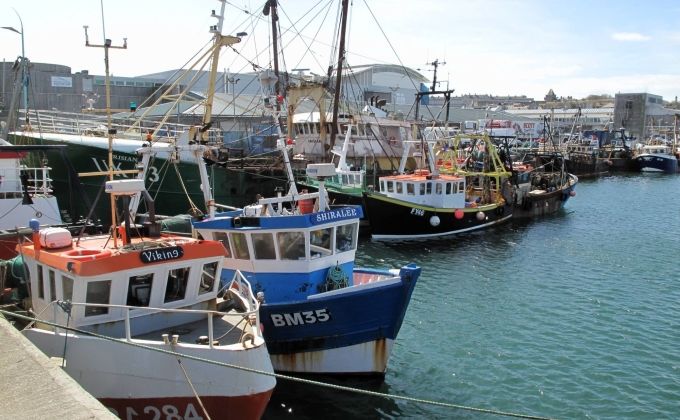Only 5 out of UK’s 73 offshore marine protected areas moving towards conservation targets, Greenpeace report reveals

After revealing that supertrawlers spent 5590 hours fishing in UK offshore protected areas in the first half of 2020, a new Greenpeace analysis has found that only 5 of the UK’s 73 offshore protected areas ‘may be’ progressing towards conservation targets. 21 offshore protected areas are ‘unlikely’ to be progressing towards conservation targets. The remaining 47 lack any information on their progress. Just 2 out of 73 offshore protected areas have long-term site condition monitoring available.
This analysis was conducted by compiling each protected area’s ‘Progress Towards Conservation Targets’ as listed on the Joint Nature Conservation Committee’s MPA Site Information Centres, which hold up to date information on each of the UK’s offshore MPAs.
These findings are revealed today in a new Greenpeace report, Bright Blue Seas [embargoed copy available on request]. The report, which features a foreword by Chris Packham, examines the state of the UK’s network of offshore protected areas, those more than 12 nautical miles from the coast, and the destructive industrial fishing activity which continues to take place with alarming regularity inside them.
Greenpeace’s report focuses on offshore protected areas because the UK Government will have new powers to regulate fishing in offshore waters after Britain’s departure from the Common Fisheries Policy. Greenpeace’s ship, Esperanza, will set sail this month to bear witness to some of the destructive practices taking place in the UK’s failing protected areas.
Chris Thorne, an oceans campaigner at Greenpeace UK, said:
“The fact that just 5 of our offshore protected areas ‘may be’ progressing towards their conservation targets is a damning reflection on this Government’s failure to properly protect the UK’s waters. Our Government isn’t even sure if these 5 are actually making progress because all but 1 lack long-term site condition monitoring.
“Our failing network of offshore protected areas is no surprise when you learn that destructive industrial fishing vessels like supertrawlers spend thousands of hours fishing in our protected areas every year. Government must ban supertrawlers and other destructive fishing vessels from operating in all our protected areas as a first step towards creating a network of fully or highly protected marine areas, covering at least 30% of our waters.”
The five offshore MPAs which ‘may be’ progressing towards their conservation targets are Fulmar, North-East of Farnes Deep, North-West Orkney, Pisces Reef Complex and Swallow Sand. The two MPAs which have some long-term site condition monitoring available are Skomer, Skokholm and the Seas off Pembrokeshire and North-West Orkney.
The 21 protected areas which are ‘unlikely’ to be progressing towards conservation targets include the Wyville Thomson Ridge, Offshore Overfalls and the Wight-Barfleur Reef, some of the MPAs worst affected by supertrawler operations in 2019




